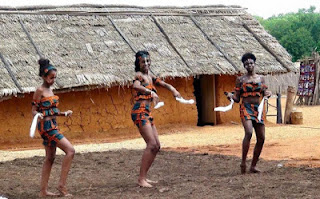Beginning in the early 1700s, Virginia tobacco planters imported increasing numbers of captive Africans to work their plantations. The shift from white indentured servants to enslaved Africans in the colony’s tobacco economy had far-reaching repercussions. Race-based slavery soon became a central feature of life in Virginia, and Africans and their Virginia-born descendents would be treated as property, and denied the freedom and opportunities of white colonists.
As settlement expanded westward, enslaved Africans and African Americans were among the settlers in backcountry areas. Nearly 40% of the Africans imported into Virginia during this time were brought from a part of the West African coast called the Bight of Biafra. Many of these captives were Igbo, a people living in the upland area north of the Bight of Biafra in what is now the nation of Nigeria. The West African Farm represents life in a free Igbo household in the Biafran hinterlands in the 1700s.
Video:
Credit: Frontier Culture Museum
Video Credit: Victor Aghadi
Video Credit: Victor Aghadi





No comments:
Post a Comment